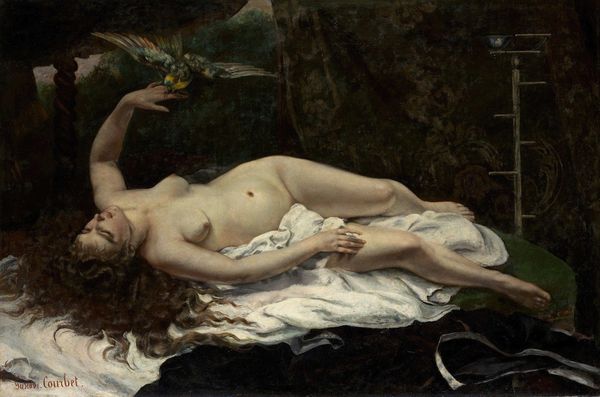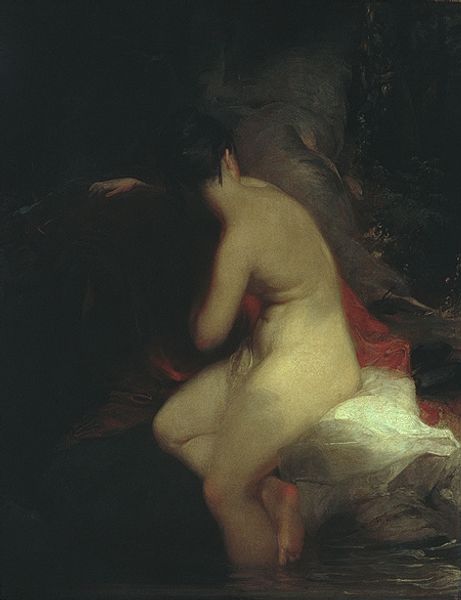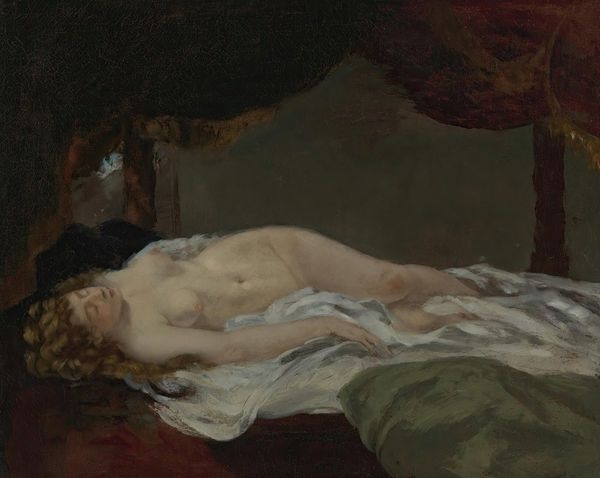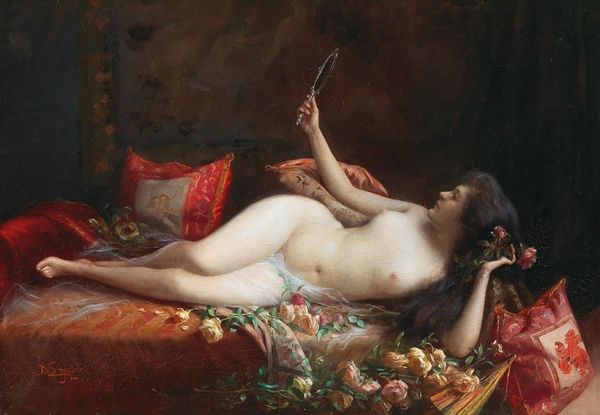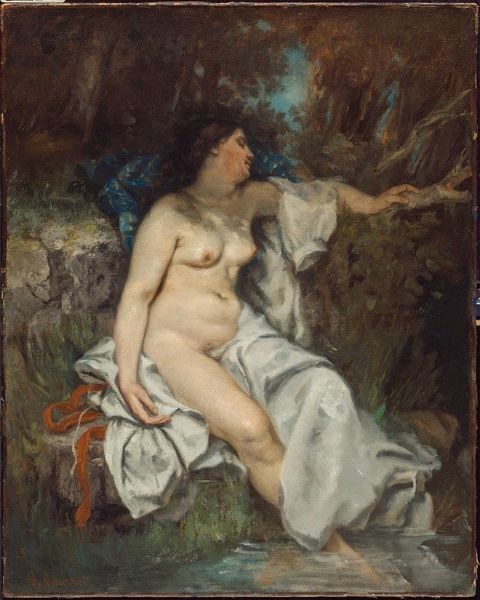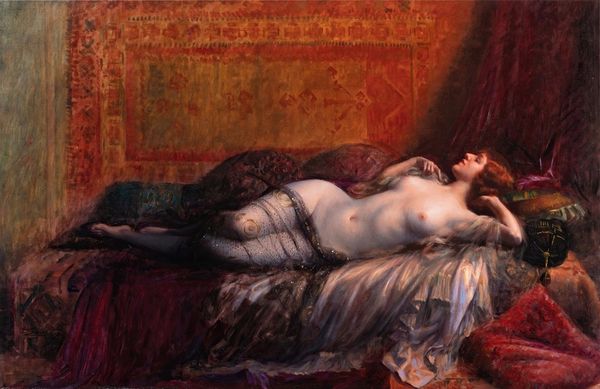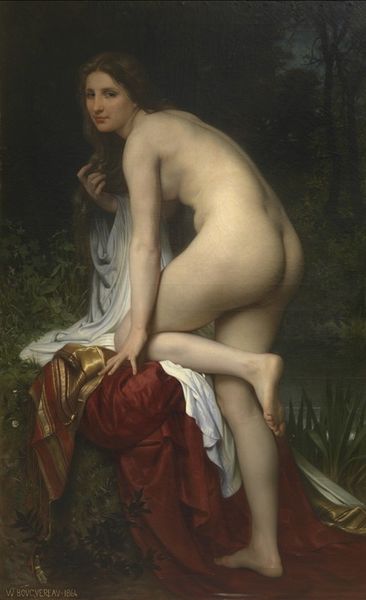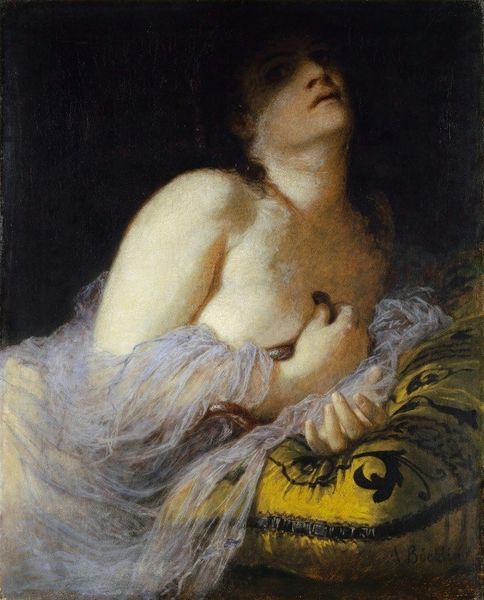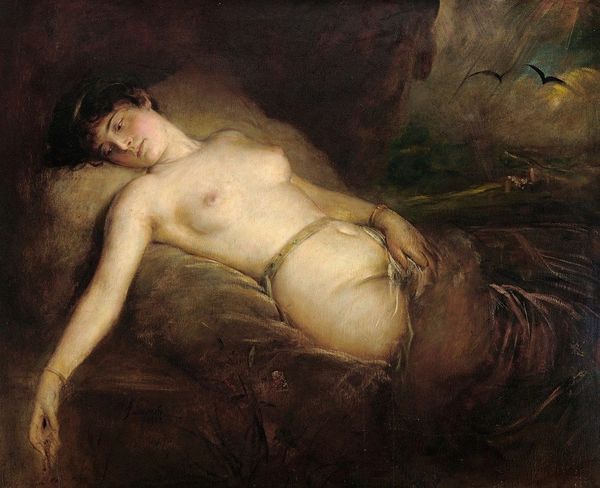
oil-paint
#
fantasy art
#
oil-paint
#
romanticism
#
surrealism
#
mythology
#
history-painting
#
nude
Copyright: Public Domain: Artvee
Curator: Today we are looking at "Leda and the Swan" by Hans Makart, a lush oil painting depicting a scene from Greek mythology. What strikes you first about it? Editor: The sheer opulence, frankly. The texture of the swan's plumage seems almost palpable. There's a real emphasis on the tactile nature of everything. The fabrics look heavy, the flowers substantial, and the swan like its feathers could truly be felt. I immediately notice the process to its completion. Curator: Yes, that's interesting because the myth itself is a very loaded one, full of violence and violation. Zeus, disguised as a swan, seduces or rapes Leda, depending on which version you read. It is about power imbalances and patriarchal narratives. What happens if we view this through the prism of the gaze and of gendered power structures? Editor: Seeing that, though, doesn't the romantic aesthetic almost soften that? The dark background gives it the texture of velvet while still framing a predatory relationship. Look at the treatment of paint: thick and luscious. It reminds me of Rubens but it still falls short. How complicit is the artist in the mythology that the patriarchy has chosen to emphasize? Curator: Exactly. And the question becomes: is Makart critiquing or perpetuating a harmful narrative? Or simply using the symbolism to convey the aesthetic standards? What's absent for me is an understanding of the labor itself of this image. Editor: You’re right, considering the artist’s time and the resources available: The materials – where were the pigments sourced? Who ground them? The canvas, was it pre-made? And think about his patronage - who commissioned it? For where would they wish to hang the portrait? It also gives us a sense of the societal status and values prevalent. I think that adds depth to this. Curator: It does force a different interpretation, viewing it in that production line. What I appreciate most now is having navigated our varying readings, realizing how history always carries those contemporary elements. Editor: For me, it highlighted the relationship between materials and their relationship to a very charged social dialogue. I suppose the discussion about production is as rich as the canvas.

